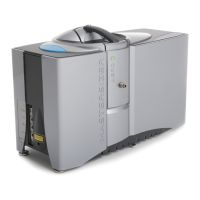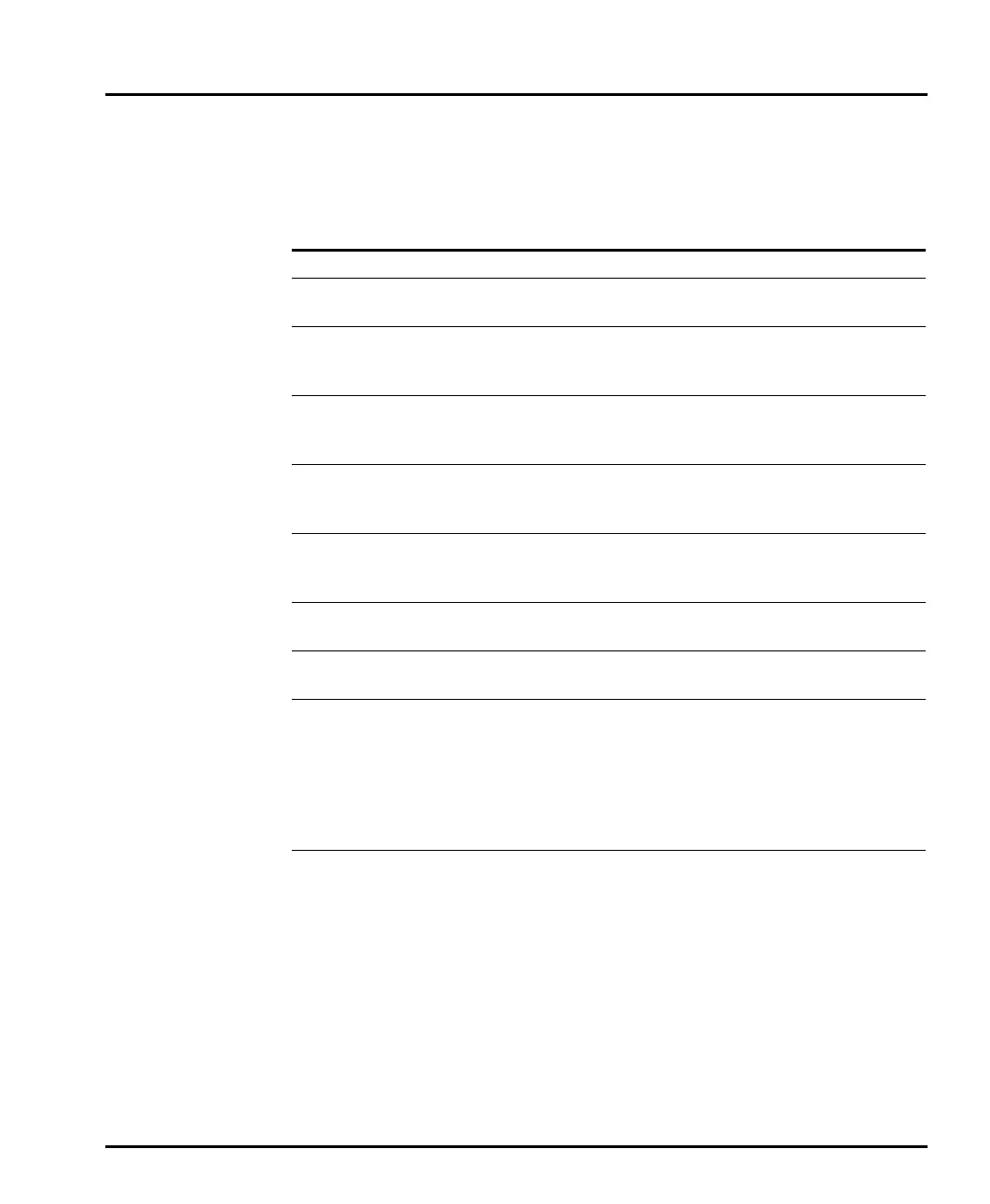Chapter 6 Sample preparation guidance
Page 6-10 MAN 0474
Symptoms of poor sample preparation
Use this table to identify sample dispersion problems:
Problem Symptom Action
Sample dissolving Obscuration decreases. Try another dispersant.
Dispersant contains
impurities
Poor background read-
ings.
Filter the dispersant
before use.
Bubbles within the dis-
persant
Bubbles typically show
as a secondary peak at
100 microns.
Degas the system.
Sample floating on the
surface of the dispersant
Sample seen on the sur-
face of the dispersant in
the tank.
Add surfactant or
admixture.
Sample clumps together Obscuration decreases. Add surfactant or admix-
ture, or use ultrasonic
action.
Sample sinks to the bot-
tom
Obscuration decreases
as the larger particles
settle out.
Increase the pump/stir-
rer speed.
Sample swells in disper-
sant
Obscuration decreases. Try another dispersant.
Particles sticks to the
windows
Rapidly increasing
obscuration.
Use an admixture or sur-
factant.
Condensation on the cell
windows
Rapidly increasing
obscuration.
If (and only if) the disper-
sant is water, add a
quantity of hot (not boil-
ing) water to the tank. If
the obscuration falls,
condensation is the
problem.
Bubbles sticking to win-
dows
Difficulty in obtaining low
background despite
many rinses.
Drain the sampling tank.
The bubbles will burst.
Fill the system carefully
with degassed disper-
sant. In a new system,
adding Decon 90 to the
tank overnight and rins-
ing 7 or 8 times will wet
out the cell surface and
reduce bubble formation.

